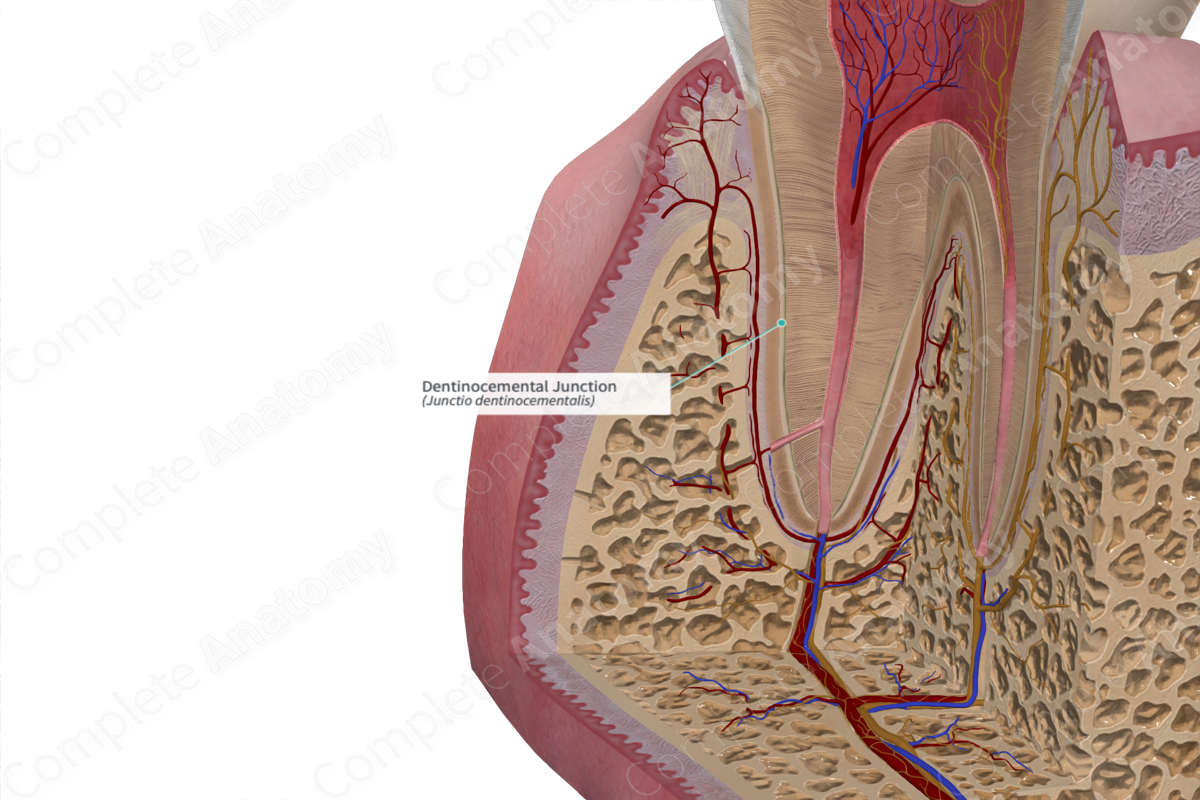
Quick Facts
The dentinocemental junction is the plane of meeting between the dentin and cementum on the root of a tooth, containing a large amount of protein, particularly collagen, and less inorganic material than either dentin or cementum; it is believed to reduce the mechanical stress and facilitate movement of nutrients between the dentin and cementum (Dorland, 2011).
Structure and/or Key Feature(s)
The dentinocemental junction is a thin layer of mineralized hyaline material that is secreted over newly formed dentin, separating dentin from cement. It lies superjacent to the granular layer of Tomes.
During tooth development, the inner and outer dental epithelia unite at the cervical loop. This meeting point demarcates where the formation of the root begins and the crown ends. The formation of the root is initiated by the proliferation of the fused epithelial cells, known as the epithelial root sheath. This epithelial root sheath is responsible for the initiation of odontoblast differentiation and thus dentin formation in the root.
Once the first dentin in the root has formed, the innermost cells of the epithelial root sheath secrete hyaline material over the newly formed dentin. Once mineralized, this hyaline material becomes known as the hyaline layer of Hopewell-Smith (Torabinejad, Walton and Fouad, 2014).
Function
The dentinocemental junction facilitates adhesion of cement to dentin.
References
Dorland, W. (2011) Dorland's Illustrated Medical Dictionary. 32nd edn. Philadelphia, USA: Elsevier Saunders.
Torabinejad, M., Walton, R. E. and Fouad, A. (2014) Endodontics - E-Book: Principles and Practice. Elsevier Health Sciences.
